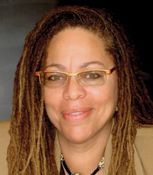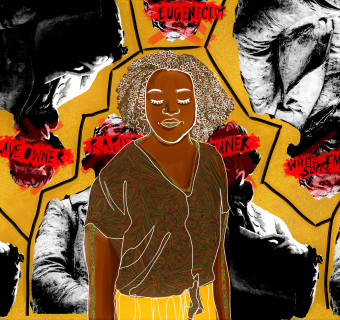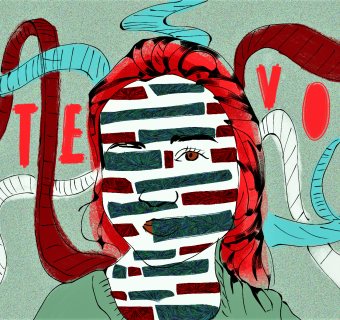Alaina Segura
A bustling, diverse crowd in a full room of Minor Hall was in attendance for a lecture at the end of February, presented by the Women, Gender and Sexuality program at U.Va. The talk was given by Cheryl I. Harris, the Rosalinde and Arthur Gilbert Professor of Civil Rights and Civil Liberties and Interim Chair of the Department of African-American Studies at UCLA. Her presentation “Race Declassified: Post-Racial Diversions” explored the relationship between class and race in the context of the college admission process and affirmative action.
 Cheryl Harris
Cheryl HarrisHarris began by introducing the “class, not race” agenda: the belief that affirmative action should focus more on admitting students from low-income homes rather than admitting students from diverse racial backgrounds. However, considering our nation’s history and social dynamics, there is often a great overlap between these two underrepresented groups.
“Dismantling racial hierarchy is joint with economic equality,” argued Harris, “so, putting these in opposition of each other is problematic.”
Harris continued to describe the legislative and historical reasons as to why a “class, not race” argument exists and broke down its assumptions to reveal the logic (or lack thereof) of this ideology. To explain how this argument is rationalized, Harris compared the two different views on race-conscious remediation: “colorblindness” after the Civil Rights Era and “post-racialism” in modern society. After the Civil Rights Movement of the 1960s, there was a phenomenon of “colorblindness” or racial erasure, meaning that many people believed that race should not be taken into account socially or legislatively because the end of Jim Crow Law meant that racism was no longer a significant factor. Today, a similar phenomenon occurs, which Harris named “post-racialism.” After the election of President Obama, which she claimed signaled the end of the “old school” Civil Rights Movement, there was a growing ideology that race need not be taken into account, because although racism still exists, our country has made significant racial progress that has moved us from the past. This rationalization is the root of the “class, not race” argument. Furthermore, Harris contested that the argument for class-based affirmative action is based on assumptions that are logically flawed. The argument assumes at least one of three things:
- remedying class inequality eradicates race inequality,
- the remediation of racial inequality does nothing to eliminate class inequality, and
- that race and class correlate sufficiently that interventions along one dimension tend to affect the other.
However, while there is certainly overlap between these two populations, argued Harris, “in reality, class can’t stand in for race and race can’t stand in for class. The two always interact.” Harris continued to explain the ambiguity of the terms “race” and “class” and how that contributes to this debate. She reminded the audience that affirmative action was first created by the Black Trade Union. They were a group knocking on doors and demanding for equal job opportunities—not to get into Harvard or Yale. The “class, not race argument” therefore depends on distortions of history and the significance of events like the election of a black president. Harris asked, “Does class mean access to a starting point or resource? Does it mean status? Or does it simply mean NOT race?” This argument, therefore, hollows out the definition of class as well as race. These conceptions of race and class in the “class, not race” argument are not understood in productive ways because the two insufficiently correlate.
To solidify this point, Harris stated, “It’s a complex relationship. The ‘class, not race’ argument ignores the complexity, which is unfortunate because it helps to explain how whiteness functions as a cross-class coalition. If you think about it in that way, maybe it’s possible to think about how to disrupt it.”
Harris concluded, “Class has meaning beyond wealth or income; it’s a material expression of racial hierarchy. The relationship is not simply correlational or coextensive, but constitutive. In that sense, we need to think of how that relationship is actually working in order to better address race and class inequality in our country.” In discussing an issue particularly prevalent in a university community, Cheryl Harris’s lecture made for an extremely powerful presentation that provoked thought and inspired change toward much-needed progress in this complex socio-economic issue that our nation faces.






